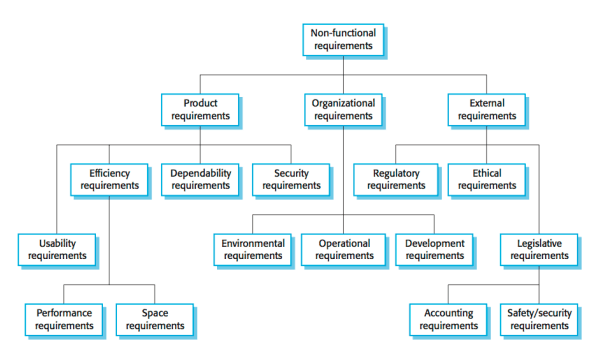- Software Requirements
- Functional And Non-Functional Requirements
- User Requirements
- System Requirements
- Interface Specification
- software requirements document
- Requirements Engineering Process
- Feasibility Studies
- Requirements Elicitation And Analysis
- Requirements Validation
- Requirement Management
- System Models
- context model
- Behavioral Model
Functional and Non-Functional Requirements
1. Functional requirements
Functional requirements define the specific behavior or functions that a system, application, or product must be able to perform. They focus on the actions the software must take to meet the user needs and business goals.
Functional requirements are often described in terms of inputs, processes, and outputs, detailing what the software should do.
Functional requirements specify what the product must do in order to satisfy the basic reason for its existence. They are
Specifications of the product’s functionality.
Actions that the product must take; check, compute, record, and retrieve.
Derived from the basic purpose of the product.
Normally business oriented, rather than technical.
Not the technical solution constraints that are often referred as the ‘system requirements
Derived mostly from the use case scenarios.
Not a quality.
Not measurable or testable at this stage.
2. Non-functional requirements
Non-functional requirements (NFRs) refer to the quality attributes, system characteristics, and constraints that describe how a system should behave, rather than what it should do. They focus on the performance, usability, reliability, scalability, security, and other aspects that impact the overall experience and operational efficiency of the system.
Hence, they are critical than functional requirements. Using these requirements, a specimen can easily avoid the errors occurring due to miss-implemented functional requirements. For example, no one would prefer of purchasing a water heater if its operation is unreliable i.e., if the heater is shock prone.
While dealing with non-functional requirements, one has to remember; it not only deals with the end product or the system (being developed) but also its process of manufacturing.
There are many reasons for the outcome of non-functional requirements.
They are listed below:
• Budget constraints.
• Inadequate user needs.
• If there is requirement of one system to be operable over other software/hardware.
• Strong privacy and safety constraints.
• Strong organizational policies etc
Classification of non-functional requirements
Product requirements
Requirements which specify that the delivered product must behave in a particular way, example: execution speed, reliability etc.
Organizational requirements
Requirements which are a consequence of organizational policies and procedures, example: process standards used, implementation requirements etc.
External requirements
Requirements which arise from factors which are external to the system and its development process, example: Interoperability requirements, legislative requirements etc.
Examples of functional and non-functional requirements
1. Online banking system
Functional requirements:
• Users should be able to log in with their username and password.
• Users should be able to check their account balance.
• Users should receive notifications after making a transaction.
Non-functional requirements:
• The system should respond to user actions in less than 2 seconds.
• All transactions must be encrypted and comply with industry security standards.
• The system should be able to handle 100 million users with minimal downtime.
2. Food delivery app
Functional requirements:
• Users can browse the menu and place an order.
• Users can make payments and track their orders in real time.
Non-functional requirements:
• The app should load the restaurant menu in under 1 second.
• The system should support up to 50,000 concurrent orders during peak hours.
• The app should be easy to use for first-time users, with an intuitive interface.
